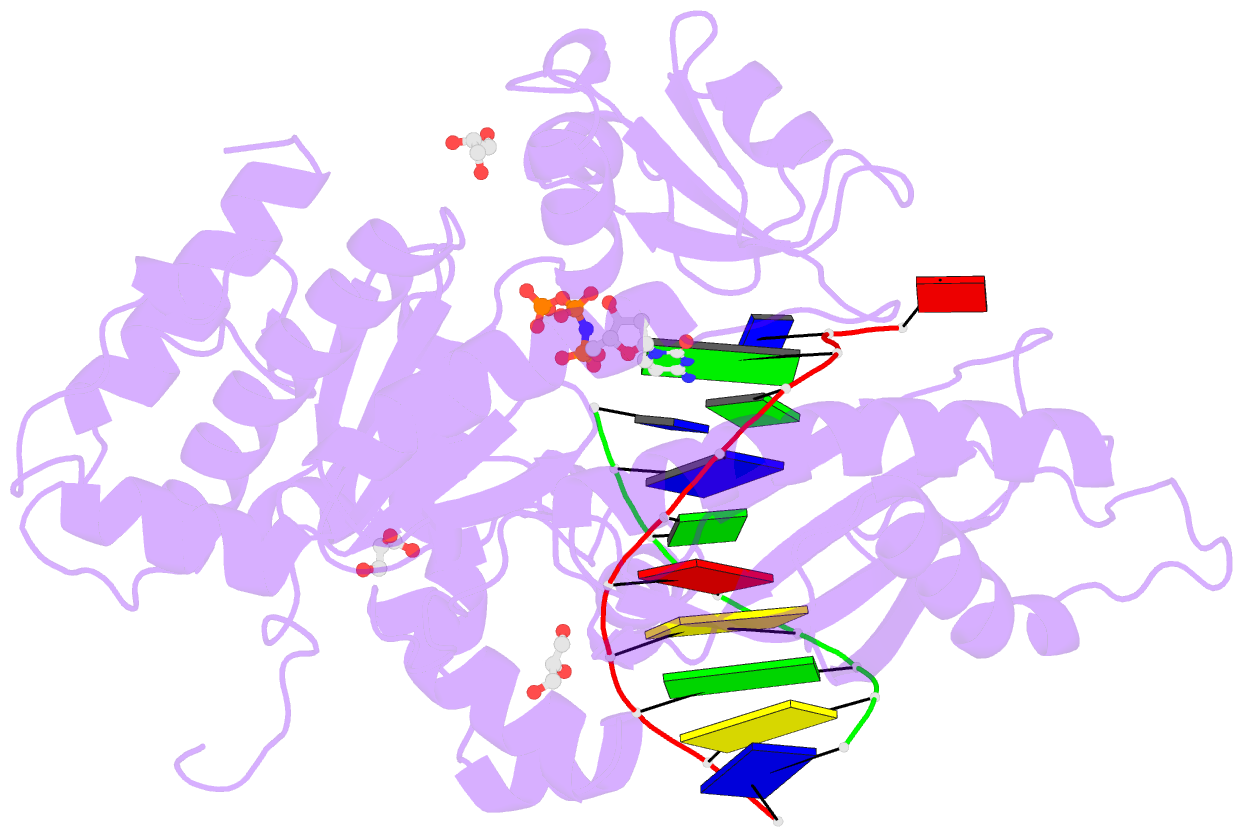Summary information and primary citation
- PDB-id
- 5l1l; SNAP-derived features in text and JSON formats;
DNAproDB
- Class
- transferase-DNA
- Method
- X-ray (1.62 Å)
- Summary
- Postinsertion complex of human DNA polymerase eta bypassing an o6-methyl-2'-deoxyguanosine : dt site
- Reference
- Patra A, Zhang Q, Guengerich FP, Egli M (2016): "Mechanisms of Insertion of dCTP and dTTP Opposite the DNA Lesion O6-Methyl-2'-deoxyguanosine by Human DNA Polymerase eta." J.Biol.Chem., 291, 24304-24313. doi: 10.1074/jbc.M116.755462.
- Abstract
- O6-Methyl-2'-deoxyguanosine (O6-MeG) is a ubiquitous DNA lesion, formed not only by xenobiotic carcinogens but also by the endogenous methylating agent S-adenosylmethionine. It can introduce mutations during DNA replication, with different DNA polymerases displaying different ratios of correct or incorrect incorporation opposite this nucleoside. Of the "translesion" Y-family human DNA polymerases (hpols), hpol η is most efficient in incorporating equal numbers of correct and incorrect C and T bases. However, the mechanistic basis for this specific yet indiscriminate activity is not known. To explore this question, we report biochemical and structural analysis of the catalytic core of hpol η. Activity assays showed the truncated form displayed similar misincorporation properties as the full-length enzyme, incorporating C and T equally and extending from both. X-ray crystal structures of both dC and dT paired with O6-MeG were solved in both insertion and extension modes. The structures revealed a Watson-Crick-like pairing between O6-MeG and 2"-deoxythymidine-5"-[(α, β)-imido]triphosphate (approximating dT) at both the insertion and extension stages with formation of two H-bonds. Conversely, both the structures with O6- MeG opposite dCTP and dC display sheared configuration of base pairs but to different degrees, with formation of two bifurcated H-bonds and two single H-bonds in the structures trapped in the insertion and extension states, respectively. The structural data are consistent with the observed tendency of hpol η to insert both dC and dT opposite the O6-MeG lesion with similar efficiencies. Comparison of the hpol η active site configurations with either O6-MeG:dC or O6-MeG:dT bound compared with the corresponding situations in structures of complexes of Sulfolobus solfataricus Dpo4, a bypass pol that favors C relative to T by a factor of ∼4, helps rationalize the more error-prone synthesis opposite the lesion by hpol η.





